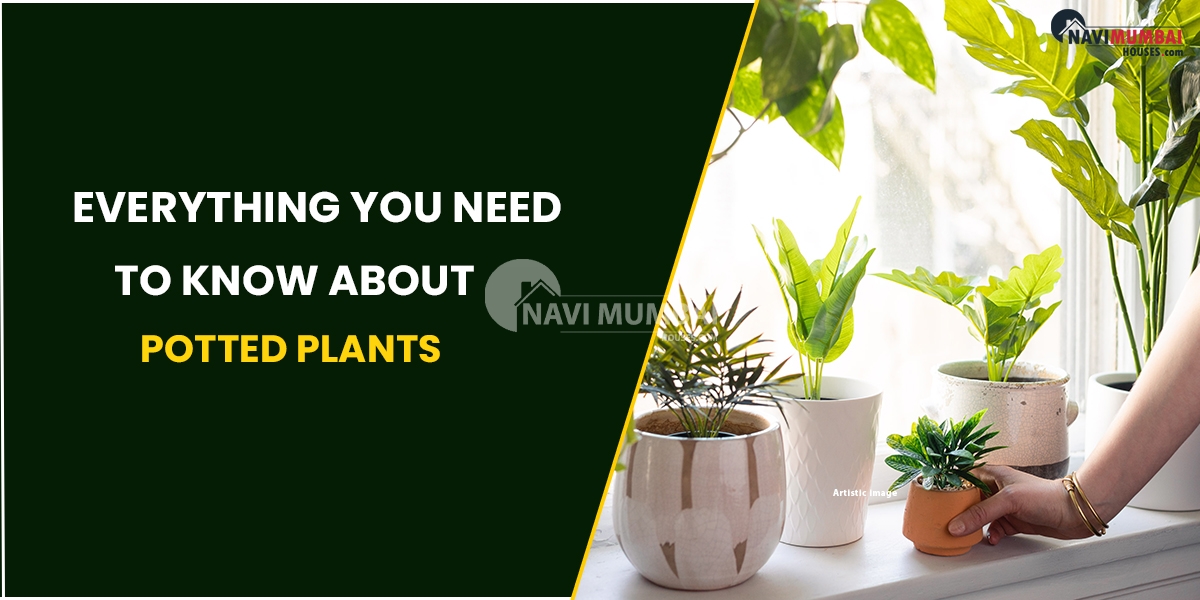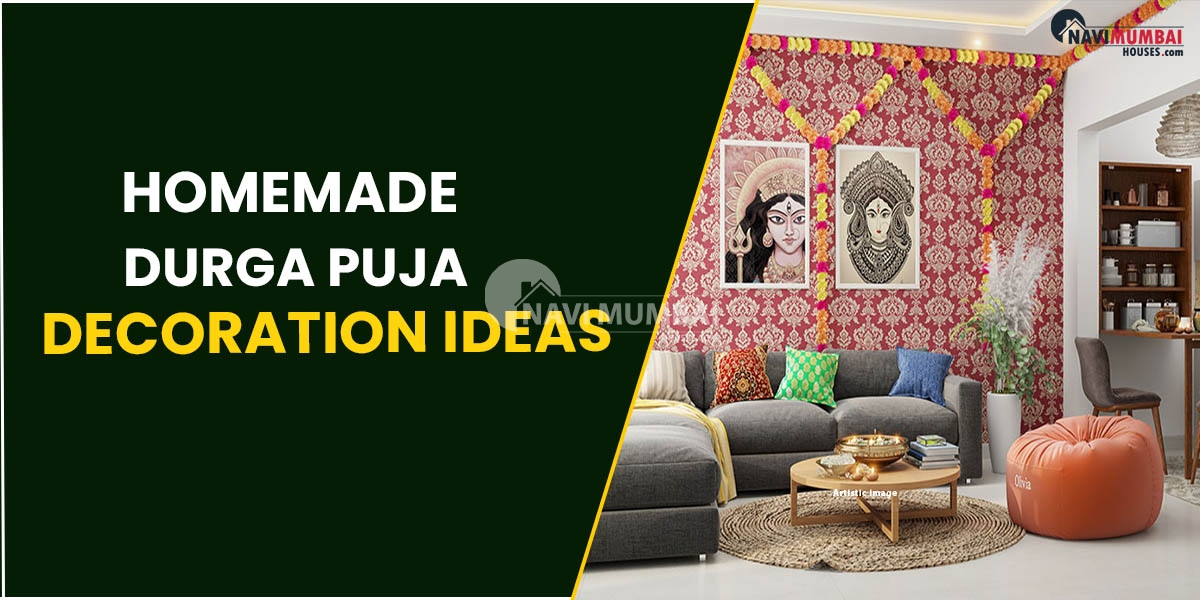
- December 20, 2022
- News
Everything You Need To Know About Potted Plants
Potted plants may add beauty to any area, whether it be a yard, workplace, or house. Potted plants may help filter the air and provide a calming environment. Here is all the information you need to know about potted plants.
The living room, balcony, study, kitchen, window sills, patio, or garden are all suitable places to keep potted plants. Group them in a corner as part of an internal design to provide a joyful atmosphere.
Are you looking flat for sale in Kharghar?
What is a plant in a pot?
Plants that are cultivated in containers as opposed to the ground are referred to as potted plants. A houseplant is an attractive plant that is cultivated indoors. It is also referred to as a potted plant, indoor plant, or potted plant. Potted plants may be kept in homes or businesses to give a touch of green and improve the décor.
Advantages of house plants
Potted plants can introduce a little of nature within the home. A flowering plant is an indicator of our health and happiness. According to research, green environments can enhance cognition, promote relaxation, and lessen mental exhaustion. It’s therapeutic to garden. Plants improve emotions, productivity, focus, and creativity while easing stress and exhaustion. Many plants, including the rubber plant, areca palm, aloe vera, snake plant, peace lily, and spider plant, have remarkable air-purifying properties that remove pollutants, boost humidity, and create oxygen. Planting in pots enables a gardener to quickly relocate a plant to its ideal environment. Potted plants provide you the freedom to move and arrange them according to the available space.
Choosing the proper pot
The correct container for a plant promotes growth. Choose a pot based on the size and projected development of the plant. Choose a container that is at least 25% larger than the plant’s predicted height. This guarantees the roots have ample room to spread out. The minimum dimensions for outdoor pots are 12 inches across by 10 inches deep. The area available for the roots increases with the size of the container. The size of the container can be determined in part by the type of plant. Buy pots with drainage holes at all times.
Put it on a tray if you plan to keep it indoors. When deciding on the size and design of the pot, take the available space into account. There are many different sizes, forms, and materials for pots, including ceramic, terracotta, fibreglass, stone, wood, and plastic. Because they are permeable, terracotta pots are perfect for growing potted plants. For plants that require continual hydration and irrigation, plastic and fibreglass containers are suitable options. They hold more water since they are waterproof, making them perfect for plants that need a lot of water. You can choose to pot your plants in recyclable bottles, tins, jars, or buckets.
Soil for the plant in a pot
Manure and compost should be added in adequate quantities to the soil. A adequate quantity of compost, manure, and oil pellets for nitrogen, phosphorus, and potassium must be included with the soil mixture for a new plant. They would occasionally require fertilisers and nutrients throughout time. Organic matter for the soil may be added by compost made from household trash, and ethically sourced sand and cocopeat are excellent soil aerators. More fertiliser is required for plants growing in containers than for those in the ground.
The positioning of potted plants
Always bear in mind where to put your plant, whether in direct sunlight or a partially shaded spot. Choose plants based on the amount of sunshine that each area of your house or business receives. Light is essential to all plants’ life. For your potted plants to develop, it’s essential to have the correct quantity of light. Plants with comparable light requirements should be grouped together for both indoor and outdoor pots.
How do you water plants in pots?
Potted plants need both water and excellent drainage to thrive. Potted plants might die from being overwatered. As a general guideline, attempt to water thoroughly and less often as opposed to lightly and frequently. Deep watering would promote the growth of robust roots and improve nutrient absorption. So that plants are not left sitting in extra water, pots must contain drainage holes. To catch any surplus water, place a dish beneath the pot at all times. To avoid excessive sogginess and root damage, drain this extra water after roughly an hour. Check the soil’s wetness before watering by inserting your finger into it. Only water the soil if it seems dry.
Indoor and outdoor potted plants that require little upkeep
To maintain a few potted plants at home, you don’t need a lot of time, room, or light. Some plants favour dim lighting and infrequent irrigation. Here is a selection of houseplants to pick from if you live in a household with little natural light or want low-maintenance plants.
Indoor potted plants
- Spider plant
- ZZ (Zamioculcas Zamiifolia) plant
- Snake plant
- Peace lily
- Rubber plant
- Money plant
- Fern
Low–maintenance outdoor potted plants
- Jade
- Palm trees
- Dracaena
- Monstera peru
- Aglaonema red
- Anthurium
- Zinnia
- Lantana
- Basil
- Ficus
Herbs and veggies in pots
Numerous plants and vegetables are simple to produce in pots. Most veggies require either full sun or some shade. On the balcony or on the window, where one receives sufficient sunshine for four to five hours every day, indoor vegetable gardens can be put up. Spinach, methi, lettuce, mint, parsley, rosemary, thyme, oregano, lemon balm, and other veggies are all simple to cultivate. Here are a few herbs and vegetables that a novice may grow successfully in pots.
Coriander
On a sunny window sill, plant coriander seeds in a container. Don’t water the plant excessively. Soon, coriander will start to sprout small branches that you may harvest and use.
Potted Plants: Chillie
Chilies are simple to cultivate when given the right amount of sunlight and water. Chilies should be planted in a medium- to large-sized container. From a dried red chilli, remove the seeds, then scatter them. Prior to transferring the saplings into a larger pot when they reach the 6- to 8-leaf stage, let them sprout in a seed tray. Chillie plants benefit from lots of sunlight when they are growing.
Curry leaves
Curry leaf plants require a lot of sunshine. Keep it in direct sunshine for the most of the year, excluding the hottest months. While seeds work well, planting stem cuttings (about 3 inches long) is much simpler.
Potted Plants: Brinjal
This plant needs lots of sunshine and wet soil. Warm temperatures promote rapid seed germination. The brinjal plant thrives in sandy-loamy or loamy soil that has good drainage. To absorb more sunlight while growing brinjal seeds in pots, it is best to use a dark-colored container.
Spinach You can grow spinach easily on a windowsill or balcony. Choose pots that are six to eight inches deep and wide, rectangular. Rich dirt needs to be removed from it. Avert direct sunshine.
caring advice
- Select a plant based on the lighting conditions in the room or garden area. Roses and other sun-loving plants would not endure. Plants that prefer shade will burn in an area with too much light. Select the appropriate plants for the available light. For places with little light, Boston ferns or philodendrons work well.
- Avoid letting plants’ leaves accumulate an excessive amount of dust. Use a damp towel to gently clean the leaves down on either side once a month.
- Suspend pots from appropriate-sized saucers. The diameter of the saucer must match the diameter of the pot’s top.
- Large pots store more soil and keep it damp for a longer period of time, making it simpler to grow plants in them.
- Put many pots together to make an eye-catching arrangement. Use materials or colour schemes that are comparable when you have many planters.
- If you want to mix together different plant varieties, pick ones that like the same lighting.
- Monitor the health of the plant. Aphids, mealybugs, whiteflies, thrips, fungus gnats, and other garden pests can all be treated using neem oil. Beneficial insects like ladybirds, pollinators, and earthworms are unaffected by neem oil.
You’re looking for Buy Home In Navi Mumbai we have the Best Buy Properties In Navi Mumbai Like Ready to Move & Nearby possession: https://navimumbaihouses.com/property/search/buy/navi-mumbai-all/
If you want daily property update details please follow us on Facebook Page / YouTube Channel / Twitter










